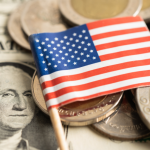Trump Tariffs in 2025 dominate headlines as President Donald Trump redefines U.S. trade strategy with a daring approach. As of March 26 2025 enacted tariffs on key partners like China Canada and Mexico ripple across the global economy. Meanwhile threatened tariffs cast shadows over other nations and sectors fueling uncertainty for businesses and households. This article explores the state of Trump Tariffs in 2025 detailing what’s active what’s pending and how these moves might reshape daily life for Americans.
Trump Tariffs in 2025 launched with force soon after Trump took office. On February 4 a 25 percent tariff struck goods from Canada and Mexico while a 10 percent levy hit Chinese imports. These early actions targeted over $800 billion in trade with exceptions for sectors like autos under the U.S.-Mexico-Canada Agreement. By March 4 the Chinese tariff rose to 20 percent reflecting Trump’s push against trade gaps and fentanyl issues. Trump Tariffs in 2025 seek to lift domestic industries though experts predict sharp price hikes for consumers.
Threatened Trump Tariffs in 2025 deepen the stakes. Trump has proposed a 200 percent tariff on European alcohol if the EU retaliates alongside a 100 percent hit on BRICS nations shifting from the U.S. dollar. An April.Concurrent 2 rollout of wider tariffs could affect trillions in trade spanning pharmaceuticals to semiconductors. These threatened Trump Tariffs in 2025 aim to pressure foreign concessions but risk igniting a trade war if unleashed without talks.
The fallout from Trump Tariffs in 2025 already shows. Prices for goods like Mexican avocados and Chinese electronics climb as firms pass costs to buyers. Estimates suggest enacted Trump Tariffs in 2025 could drain $1200 to $2000 yearly from U.S. households hitting lower-income groups hardest. Retaliation follows—Canada slapped 25 percent tariffs on U.S. exports while the EU preps levies on $24 billion in American products. This back-and-forth endangers jobs in states like Florida and Ohio.
Industries race to adjust to Trump Tariffs in 2025. Steel and aluminum makers hail the 25 percent global tariffs set on March 12 eyeing market gains. Yet automakers and tech firms tied to global supply chains face rising costs and delays. Threatened Trump Tariffs in 2025 on chips and drugs could squeeze these sectors more pushing firms to rethink production plans. Some see job growth potential though automation may cap those gains.
Globally Trump Tariffs in 2025 shift alliances. Canada’s Justin Trudeau and Mexico’s Claudia Sheinbaum express dismay with Ontario even threatening to cut U.S. power exports. The EU plans a united stand against Trump Tariffs in 2025 while China tweaks its currency to ease losses. These reactions reveal the gamble—success could bolster U.S. sway but missteps might isolate the nation economically.
Consumers feel Trump Tariffs in 2025 at the core. Imported goods drive up grocery and gas costs with smartphones potentially rising $200 if electronics tariffs land. Critics call Trump Tariffs in 2025 a burden on Americans not foreign makers while backers view them as vital for future wins. Polls show 60 percent of Americans reject Trump Tariffs in 2025 over price fears splitting public views.
The path of Trump Tariffs in 2025 rests on talks and action. Will threatened tariffs take hold or stay as leverage? The April 2 deadline nears offering either a bold surge or a tactical shift. For now Trump Tariffs in 2025 define Trump’s second term mixing economic patriotism with high-stakes risks. As firms households and nations adapt the full effects will emerge soon—shaping America’s global role.
Autor: Bergezin Vuc
Fonte: Assessoria de Comunicação da Saftec Digital







